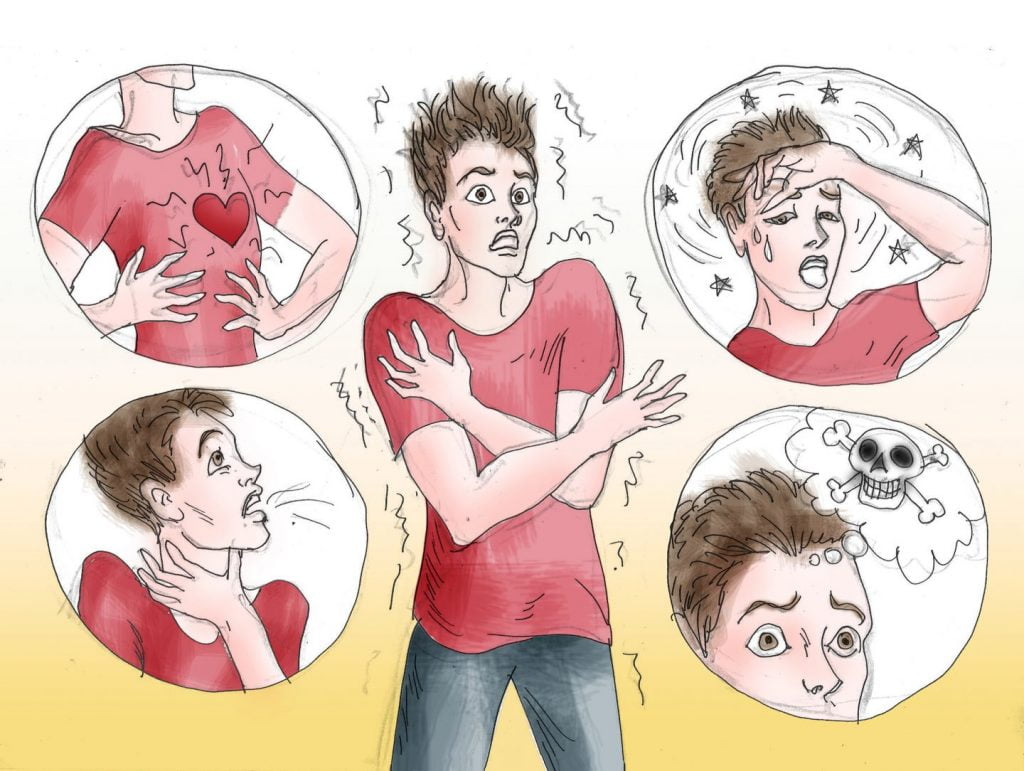Anxiety Counseling
Anxiety can mean nervousness, worry, or self-doubt. Sometimes, the cause of anxiety is easy to spot, while other times it may not be. Everyone feels some level of anxiety once in a while. But overwhelming, recurring, or “out of nowhere” dread can deeply impact people. When anxiety interferes like this, talking to a therapist can help.
Parents: The Usual Suspects
Parenting Influence Shaping Personality Traits, Confidence and Future Adult Relationships
One cannot deny the tremendous influence parents exert on their child’s development. Undoubtedly, parents play a critical role in shaping their children’s personality traits, confidence, and future relationships. This comprehensive guide will delve into various ways parenting impacts and molds a child from infancy into adulthood.
Introduction
Parenting is not merely a task of raising children. It is about paving the way for the development of an entirely new personality — a wholesome individual who is ready to face the world with confidence and effectively manage relationships in the future. Understanding three critical terms is essential as we delve into this in-depth discussion.
Firstly, personality traits refer to the distinct qualities and characteristics that define a person, including attributes like extroversion, conscientiousness, agreeableness, or resilience to name a few. Confidence, our second term, is the manifestation of self-belief. It is the assurance and inner trust that is visible in a person’s behavior and approach towards life. Lastly, relationships refer to the social and interpersonal connections a person forms throughout their life with others around them.
Parental influence, as the term suggests, refers to the impact that a mother and father have on their children’s personal development. It is a multifaceted concept entailing the physical, emotional, and psychological aspects of a child’s development. This influence starts from the moment a child is born and continues into adulthood, subtly shaping a child’s personality traits, confidence, and ultimately their relationships.
In the forthcoming sections, we will journey through insightful researches, studies, and references to understand the depth and breadth of an entity known as parental influence, its significant impact on molding a child’s personality, building their confidence, and defining their future adult relationships. So let’s embark on this enlightening journey together.
Parents as Role Models: More Than Just A Phrase
Parents wear many hats in their children’s lives: they’re providers, protectors, teachers, and most pertinently, role models. The term “role model,” despite its customary use, packs a lot more punch than most people acknowledge. Parents, intentionally or not, serve as the first figures of emulation for their children, providing the blueprint for their behavior, mannerisms, values, and importantly, personality traits.
Children learn by watching, imitating, and trying to please the people around them, and it’s at home, with parents as their primary actors on the stage, that they first begin this lifelong learning journey. Have you ever noticed a toddler mimicking a parent’s phone conversation, or a teenager adopting their parent’s outlook on money matters? This is the handiwork of observational learning—a psychological process asserting that children learn from modeling their attitudes, behaviors, and emotional reactions on those of the adults around them.
In this vein, the conversations parents engage in, the company they keep, how they react in trying situations—all serve as implicit (and sometimes, explicit) lessons for their children. They’re like sponges, soaking up patterns, behaviors, and attitudes, which commonly manifest in their personality traits.
To put some science into the mix, a study from the National Center for Biotechnology Information (“PMC”) validates this sentiment. They discovered that parents who demonstrate high levels of warmth and sensitivity towards their kids have children with more sociability and reduced levels of aggression. These are prominent personality traits that can define a child’s future engagements both personally and professionally.
So, remember, every word, action, and emotional response from a parent forms an unconscious curriculum on ‘how to behave’ for their child. Parents are the unsung directors of the stage of life, orchestrating their children’s behaviors, values, and, most crucially, personality traits.
Optimism, Self-worth, and Confidence: The Gifts of Good Parenting
Good parenting holds the power not just to educate a child, but to build their self-esteem, inspiring traits such as optimism and confidence that will serve them throughout their lives. This isn’t to say parenting is a one-size-fits-all role, wherein certain actions guarantee certain results. Rather, it’s the small yet meaningful daily interactions that slowly but surely weave into the mosaic of a child’s self-perception.
Self-esteem first sprouts from the nutrients of parental affection and approval. In the eyes of a child, parents are protectors and providers, but they’re also the first yardstick by which the child measures their own worth. If parents constantly criticize a child, they may internalize that negativity, leading to lower self-esteem. Conversely, children showered with appropriate praise and encouragement learn that they are capable and valid individuals, which significantly bolsters their confidence.
Moreover, parents also contribute straightforwardly to a child’s confidence development by fostering a setting that empowers them to have an active role in their own decisions and fosters autonomy. This, in turn, enables children to establish their unique identities apart from their parents, encouraging the growth of self-assurance that they can manage life’s challenges on their own.
This isn’t idle speculation, but findings borne out by research. A study referenced in the “WashU Source” underlines that not only are children’s personalities significantly influenced by their parents, but that this influence plays a major role in shaping them as confident individuals capable of navigating adulthood with resilience and optimism.
It’s a journey, not a destination. The seeds of self-worth, positivity, and courage planted through good parenting germinate and flourish over a lifetime, resulting in adults who’re not merely equipped to face the world, but ready to leave their positive mark on it. Both the work and the reward of parenting are ongoing, but the roots of self-worth and confidence it can instill are lifelong gifts.
The Power of Parental Guidance: Molding A Child’s Thinking Pattern
A child’s thinking pattern often mirrors that of their parents. This reasoning pattern, consciously or unconsciously transmitted, impacts how children perceive and respond to their world. Parental guidance serves as a crucial cognitive mold shaping their thought process.
Parenting styles can significantly sway how a child deciphers information and forms attitudes towards life experiences. Authoritative parents, known for their balanced approach, foster critical thinking in their kids. Their children usually exhibit an organized and logical thought process, leading to effective communication and decision-making skills. Such cognitive abilities often serve as essential tools in maneuvering life’s challenges successfully.
Contrarily, other parenting styles can lead to drastically different cognitive development. For instance, permissive parenting might foster self-centered thinking patterns as children could become accustomed to getting their desires catered to without opposition. Moreover, authoritarian parenting, which often employs a strict, no-negotiation approach, might inhibit independent critical thinking as children habitually relying on external directives may struggle to make decisions autonomously.
Finally, while not placing blame solely on parenting style, studies from “PMC” show a correlation between certain thought patterns and parenting styles. For instance, children of authoritarian parents may be more likely to show tendencies towards black-and-white thinking, which can be limiting in complex real-life situations. This underlines the profound impacts of parental guidance on shaping a child’s thinking pattern.
In essence, a parent’s approach and style of communication influences their child’s thought process, which can cast long-lasting effects on their cognitive development and problem-solving abilities needed throughout life.
Agent of Love: Parents and the Formation of Future Adult Relationships
Parents, as the primary caregivers, play a pivotal role in shaping their children’s understanding of love and relationships. They are essentially their children’s first relationship coaches. This article dissects the nuances of the parental impact on the formation of their child’s future relationships.
Initial Understanding of Love
Parents are the first agents of love that children encounter. They are responsible for cultivating the initial understanding and expectation of emotional connection, affection, and partnership within their children. The early relationship dynamics children experience with their parents invariably affects their perception of adult relationships. Whether it be sibling relationships, schoolmate bonds, or eventual romantic partnerships, the fundamentals a child learns from their parents significantly influence the way they interpret and form these relationships.
Influence of Family Dynamics
The dynamics within the family unit, and importantly, between the parents themselves, directly contribute to the formation of children’s relationship perspectives.
- Witnessing love, respect, and healthy communication between parents often results in adults who view these behaviors as norms in a relationship.
- In contrast, experiences of conflict or animosity may potentially lead to challenges in maintaining positive relationships in adulthood. Childhood impressions often directly translate into their future understanding and handling of relationships.
The Parental Connection to Adult Relationships
In essence, parents serve as a model for children in crafting their identities as relational beings. A positive and nurturing parenting approach often reflects on the child’s emotional health and their perception of relationships.
While this doesn’t guarantee flawless relationships in the future—it allows for evolution and personality interplay—it fundamentally sets the groundwork for the understanding of and participation in adult relationships. The parental blueprint of love often becomes a guide children use when navigating the complex world of adult relationships.
Parents wield a significant influence on their children’s future relationships. They lay the foundation for emotional understanding and perception of relationships, shaping children’s identities as relational beings. The dynamics within the family unit—especially between the parents—also have a direct impact, imprinting norms and behaviors that children may carry into their adult relationships. While the parental blueprint doesn’t guarantee perfect relationships, it indeed sets a crucial stage for future connections.
Different Parenting Styles: Shaping Growth Differently
As diverse as the world’s cultures and traditions are, so too are the ways parents raise their children. Different styles of parenting can have a wide array of impacts on child development, often setting the stage for the person a child will become in adulthood. The concept of parenting styles was first introduced by Diana Baumrind in the 1960s and has since been elaborated upon by other researchers.
The primary types of parenting styles include authoritative, authoritarian, permissive, and uninvolved parenting.
Authoritative parenting, often seen as the most balanced approach, involves a warmth and nurturing attitude towards the child, combined with clear and consistent rules. It’s been suggested that children raised by authoritative parents may develop higher self-esteem, better social skills, and exhibit less risk-taking behavior.
On the other hand, authoritarian parenting is typified by stern, strict rules and high expectations for the child’s comportment, occasionally bordering on the punitive. Theoretically, children raised in an authoritarian environment may struggle more with self-esteem, may be exceedingly obedient, or may react by exhibiting rebellious behavior.
Permissive parenting usually includes a lot of warmth and affection, but with scarce rules or disciplines in place. Children raised in these settings may struggle with self-control, as they are used to having their every whim catered to.
Lastly, uninvolved parenting is characterized by a general absence or neglect of the child’s needs. It’s not difficult to parse that this style can lead to a range of developmental and psychological issues for the child, including low self-esteem and behavioral problems.
However, it’s important to note that these parenting styles are not ‘one-size-fits-all.’ Many parents may blend elements from different styles depending on the situation at hand. Further, individual temperament, culture, and environmental factors can also significantly influence the adoption and success of a particular parenting style.
In summary, the style of parenting adopted can drastically change the trajectory of a child’s growth, potentially determining everything from their behavior and social skills to their self-perception. The right blend of discipline and love can go a long way in shaping a balanced individual ready to face the world.
Exploring the Influential Role of Parenting in Child Development
We’ve delved into the influential role of parenting in shaping children’s personality traits and patterns of interaction. Parents, as the first role models, set the fundamental tone in establishing children’s:
- Optimism,
- Self-worth, &
- Confidence
These are powerful, life-altering aspects that mold children’s minds and potentially shape their futures.
Impact of Parental Guidance
We’ve also inspected the substantial role played by parental guidance in forging a child’s thinking patterns and providing frameworks for future adult relationships.
Parenting Styles
Additionally, we looked at the myriad of parenting styles available, each one uniquely affecting a child’s growth trajectory. Top-level parenting requires adaptability as it doesn’t follow a one-size-fits-all style. It relies heavily on a child’s unique needs and temperament, challenging parents to adapt and act accordingly. Parents need to bear in mind the vast responsibility they bear, as their actions, words, and behaviors undoubtedly mold the adults their children mature into.
Practical Tips on Parenting Strategies
Parents can resort to the actionable insights provided in “Relationary” to better understand their roles effectively. This includes:
- Fostering open communication,
- Setting clear boundaries,
- Encouraging independence,
- Nurturing self-esteem, and
- Consciously modeling healthy relationships.
By incorporating these strategies into their parenting methodology, parents can better influence their children’s personality development and ability to form wholesome, satisfying adult relationships. In life’s grand narrative, no role may be as impactful – or rewarding – as that of an acutely aware, affectionate parent.
The Internal Battle Against Intense Fear
“I couldn’t breathe!”
“I felt like I was having a heart attack!”
“I thought I was dying!”
-People usually describe themselves in this way when they are having a panic attack-.

Note. Source: (Lynn, 2019)
"I feel like I am choking. I feel an urgent need to leave the area as soon as possible or something
bad will happen". - Diane
How to define Panic Attack?
A panic attack is sudden episodes of intense anxiety and fear that induces a combination of physical and psychological symptoms. Panic attacks can be frightening because they occur abruptly even when you are relaxed or asleep. They usually reach their peak in 5 to 10 minutes and persist for about half an hour. Panic onset could happen as early as the age of 12. Many people experience a panic attack once or twice in their lifetimes but frequent and repeated panic attacks might be a precursor of panic or anxiety disorder.
Sometimes people can experience increasing anxiety by just thinking of having another panic attack (i.e. anticipatory anxiety). If panic attacks remain untreated, one’s life may get impacted in a significant way. People may actively avoid places where one has previously happened or cease activities that may trigger the following attacks such as riding an elevator, using public transportation, or skipping social events, resulting in the development of agoraphobia (i.e. fear of going into public spaces or crowds).
What should I know about the symptoms of panic attack?
Panic attacks are associated with palpitations, shortness of breath, trembling, nausea, dizziness, numbness, feelings of choking, fear of losing control, and fears of dying. In addition to the typical fight-or-flight responses and extreme fears, people may experience depersonalization, which is the feeling of detachment from oneself. One may also experience derealization, perceiving the external world as dreamy or unreal.
Panic attacks are often accompanied with abnormal chest pain and rapid heartbeat that resemble the feeling of having a real heart attack. As a result, people who are experiencing their first panic attack typically ended in the emergency room (ER).
There are two common types of panic attacks. An expected panic attack occurs when responding to panic triggers or specific cues. For example, one who has a fear of blood (hemophobia) may expect to have panic attacks when seeing blood or getting blood tests. Conversely, an unexpected panic attack happens without any apparent triggers.
What are the causes of panic attack?
The causes of panic attacks are unclear. Several factors which are usually involved, including genetic predisposition, major life transitions, and extreme stress. For example, graduating from a university, starting a new job, childhood trauma or losing a loved one could potentially trigger panic attacks. Panic attacks are differentially reported among genders. More severe panic attack symptoms and agoraphobia avoidance are usually found in women.
How can panic attacks be treated?
Early treatment can be effective to reduce the symptoms and the risk of recurrent attacks. Cognitive behavioural therapy (CBT) helps people to identify their symptoms, alter their thinking pattern and behaviours in response to the situations that trigger fears to a more realistic level. CBT allows them to be exposed to fear-provoking situations or experience the physical sensation of the attacks by using imagery, bodily focusing and voluntary hyperventilation. With each exposure, you will be less afraid and gain back control over the panic. Training in deep breathing and progressive muscle relaxation techniques also allows people to calm themselves down after symptoms onset. Trivial things such as avoiding caffeine, exercising regularly (e.g. yoga) and getting sufficient good quality sleep may help release stress and anxiety. Besides, antidepressants (e.g. selective serotonin reuptake inhibitors, SSRIs) and anti-anxiety medications (e.g. benzodiazepines) can be used to control some of the symptoms temporarily. However, benzodiazepines may bring some unwanted side-effects.
References
American Psychiatric Association. (2013). Diagnostic and statistical manual of mental disorders (DSM-5®). American Psychiatric Pub.
Emamzadeh, A. (2018). Panic Attacks: Nature, Types, and Symptoms. Retrieved 1 July 2020, from https://www.psychologytoday.com/us/blog/finding-new-home/201808/panic-attacks-nature-types-and-symptoms
Huffman, J. C., Pollack, M. H. (2003). Predicting panic disorder among patients with chest pain: An analysis of the literature. Psychosomatics, 44, 222–236.
Lynn, C. (2019, September 1). Anxiety is a spirit guide; Or how I deal with panic attacks. Crystal Lynn Bell. https://www.crystallynnbell.com/anxiety-is-a-spirit-guide-or-how-i-deal-with-panic-attacks/
Goodwin, R. D., Lieb, R., Hoefler, M., Pfister, H., Bittner, A., Beesdo, K., & Wittchen, H. U. (2004). Panic attack as a risk factor for severe psychopathology. American Journal of Psychiatry, 161(12), 2207-2214.
Salkovskis, P. M., Clark, D. M., & Hackmann, A. (1991). Treatment of panic attacks using cognitive therapy without exposure or breathing retraining. Behaviour Research and Therapy, 29(2), 161-166.
Sheikh, J. I., Leskin, G. A., & Klein, D. F. (2002). Gender differences in panic disorder: findings from the National Comorbidity Survey. American Journal of Psychiatry, 159(1), 55-58.
Wittchen, H. U., Nocon, A., Beesdo, K., Pine, D. S., Höfler, M., Lieb, R., & Gloster, A. T. (2008). Agoraphobia and panic. Psychotherapy and Psychosomatics, 77(3), 147-157.
Generalized Anxiety Disorder (GAD)
When Anxiety “Robs” Your SERENITY

Source: Shutterstock
What is GAD?
Anxiety is part of our daily life. It is normal to feel anxious about something or about certain events, as it could be warning us of a potentially dangerous situation, helping us to plan ahead for it. However, when the anxiety becomes excessive, chronic, uncontrollable then it might be a disorder. Generalized Anxiety Disorder (GAD) is defined as having excessive and pervasive worry on everyday life events, or even something that does not exist. They would be worrying so much that it interferes with their daily functioning, and their relationship with others because they couldn’t control the worry. Symptoms usually first appear during adulthood, but it does occur in all ages too including childhood and adolescence. Interestingly, what differs between having GAD during childhood/adolescence or during adulthood is the content of their worry, which tends to be age-appropriate. Children and adolescents would tend to worry about their competency at school, sports performance, possibility of catastrophic event, etc; while the adults would tend to worry about their work performance, their family well-being, their physical health, etc. The common symptoms of an individual with GAD are as stated below:
– Difficulty concentrating
– Trouble sleeping
– Irritability
– Easily fatigue
– Muscle tension
– Restlessness, or feeling on-edge
What causes GAD?
There are no specific factors that contribute to the development of GAD, however, we are able to identify a few common factors that influence the development of GAD. Firstly would be the genetic predisposition. Studies have shown that if one of our first degree relatives, such as parents, siblings, and your child, have GAD we would have a higher risk of developing one too. Surprisingly, women are also more likely to have an anxiety disorder in general than men. Secondly, our life experiences would also play a big role in developing GAD in us. Researchers have found that experiencing trauma in childhood could increase our risk of developing GAD. Traumatic experiences such as the death of a loved one, involved in a major car accident, abandonment, physical and mental abuse, neglect, etc. These traumatic events would leave us feeling uncertain, feeling extra cautious, or humiliated, it is understandable that it would make us more anxious in different circumstances later on in life.
Treatment for GAD?
Similar to most mental disorders, psychotherapy and medication are the most common treatments for GAD. Cognitive-Behavior Therapy (CBT) is one of the most common and effective therapy for GAD, as its benefits could last longer than having medications, not to mention that some medications could have side effects. CBT aims to modify your thinking and behaviors, to be mindful of your thinking process and to help you to distance yourself from those anxious thoughts. However, there is no single treatment that works for everyone. Some may prefer or actually require medication instead of CBT.
Medications such as anti-anxiety, anti-depressant, or sedatives are usually prescribed. Anti-anxiety, such as Xanax and Klonopin, have high risk of dependency and abuse; Antidepressant such as Buspar, Zoloft, Lexapro, etc, might have several side effects including dry mouth, nausea, diarrhea, dizziness, headaches, etc; sedative such as diazepam are usually prescribed for severe cases as it helps to ease severe anxious symptoms within 30 to 60 minutes.
There are also less formal approaches in easing the symptoms, by changing their daily lifestyle. These may include regular exercise, yoga/meditation, a well-balanced diet, good quality of sleep, and self-help books.
Living with GAD
Living with GAD is not easy, for both the person and the relatives/caregivers. It makes their lives frustrating and terrifying, as the patient would be worried about anything and everything most of the time. For example, laying awake at night worrying that your house would get burned down, you have forgotten to do your homework and worry that it might end your school career, when your husband/wife ran up to a grocery store and you worried that a drunk driver would drive over and kill him/her. Especially at night before bed, you may find your thoughts running through your worries, giving you a hard time to fall asleep. These are the parts of the daily life of someone that has GAD.
However, if you are a victim of GAD, remember while you walk through your journey with GAD, you are not alone and you could still live a fulfilling and normal life. You might feel it’s hard and uncontrollable right now, but there are resources, trained professionals, and coping techniques to help you with it. Learning how to manage your triggers and keep a positive attitude will all help.
References
Wittchen, H.-U. (2002). Generalized anxiety disorder: prevalence, burden, and cost to society. Depression and Anxiety, 16(4), 162–171. https://doi.org/10.1002/da.10065
Gottschalk, M. G., & Domschke, K. (2017). Genetics of generalized anxiety disorder and related traits. Dialogues in clinical neuroscience, 19(2), 159–168. Retrieved from https://www.ncbi.nlm.nih.gov/pmc/articles/PMC5573560/
Borza L. (2017). Cognitive-behavioral therapy for generalized anxiety. Dialogues in clinical neuroscience, 19(2), 203–208. https://www.ncbi.nlm.nih.gov/pmc/articles/PMC5573564/
Glasofer, D. R. (2020, July 11). An Overview of Generalized Anxiety Disorder. Verywell Mind. https://www.verywellmind.com/generalized-anxiety-disorder-4157247
Carey, E. (2020, April 3). Generalized Anxiety Disorder. Healthline. https://www.healthline.com/health/anxiety/generalized-anxiety-disorder
No Results Found
The page you requested could not be found. Try refining your search, or use the navigation above to locate the post.

